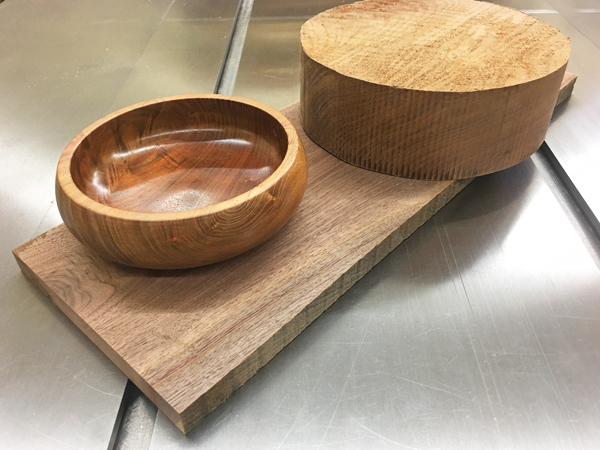
I was lucky enough (I think) to be given some newly cut walnut. The “giver” planned to use it as firewood, so the 10- to 12-in.-dia. logs were cut into 16- to 18-in. lengths. Should I cut these pieces in half, lengthwise to aid drying, or just leave them whole in order to prepare them for woodworking? How long will drying take in an area with 60 degree temperatures? Any info you could provide would be greatly appreciated. – Larry King
Chris Marshall: I’d feel pretty lucky to receive a bunch of walnut log sections, Larry — and good on you for considering not to burn them as firewood! But, time is of the essence for you, because the longer those green logs remain round, the more moisture they’ll lose through the end grain (where water is lost the fastest). And, different rates of radial and tangential shrinkage as the water is lost will build tension in the wood and almost certainly lead to checking (cracks) on their ends.
So, to answer your question, yes, I would split them up. The more surface area you expose, the faster the wood will dry. But, it still won’t dry evenly this way. If I were you, I’d make a decision at this point: do I want to turn the sections into small bowls on my lathe or slice them into boards? Walnut is beautiful wood to turn. If you go that route, I’d bandsaw the sections into round bowl blanks and rough-turn them to remove excess wood. I’d pack the bowl blanks in paper bags with their own shavings — a good way to allow them to continue to dry more slowly. Write the date on the bags and store them in a dry place out of the sun. After six months to a year, they’ll be dry. Or, you can turn them green right now, but be prepared for the bowls to take on some interesting and funky shapes as they rapidly dry and distort on the lathe. Call it art! Some woodturners love the effect.
You also could also process these small logs into short boards for smaller projects — picture frames, jewelry or bandsaw boxes, bases for plaques and the like come to mind. Air-dried walnut is much sought after in board lumber for its color. It’s a prettier, richer brown than kiln-dried lumber. If you want to make boards, resaw the logs into board slabs, then stack and sticker them just like longer lumber to allow air to circulate around all of their surfaces. That’s the best way to prevent uneven rates of shrinkage. Cut the boards thicker than you think you’ll need, because some pieces will distort while they dry. The extra thickness will give you a margin to joint and plane away, in order to make them flat again. You might even consider painting the ends of the boards with an endgrain sealer like Anchorseal® or even thick exterior house paint to slow down the end grain drying as much as possible — it will help to minimize checking. Give your boards about a year per inch of thickness of drying time to before using them for woodworking.





